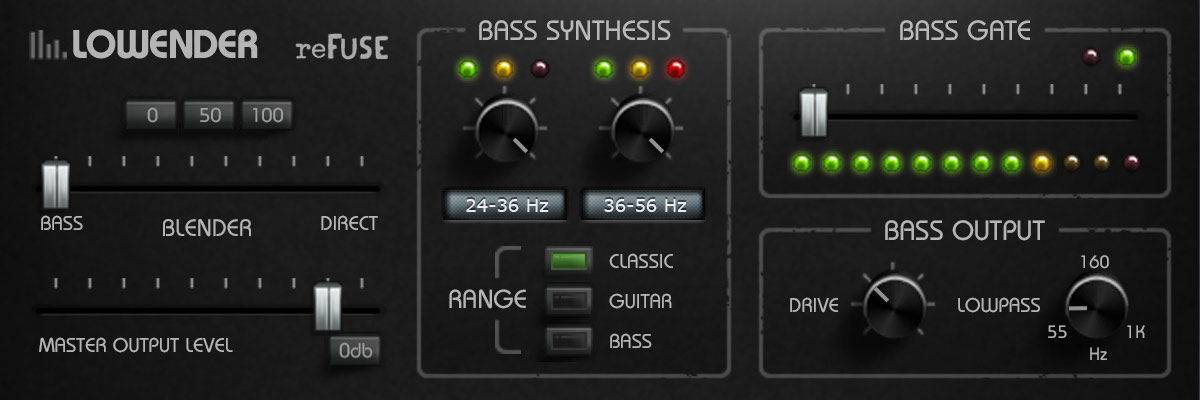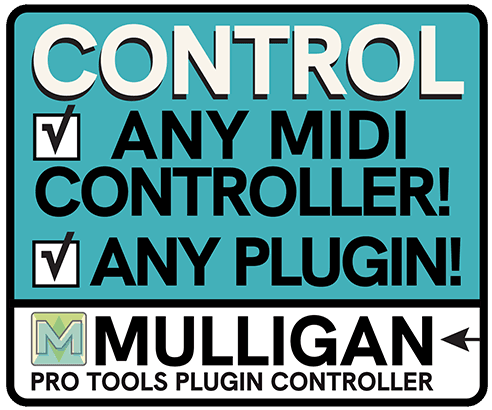Features
- Classic dual-band subharmonic architecture
- Gate, drive, and output filter controls
- Operates in 3 different frequency ranges to match program material
- Analog modeling - no FFT shenanigans!
Audio Samples
Each selection plays dry first, then is repeated with the effect added.
Lowender applied to drums
Lowender applied to drumsA four-bar drum break, first mixed normally, then through the Lowender set for smooth bass reinforcement.
Lowender applied to bass
Lowender applied to bassA bass figure, first mixed normally, then with the Lowender set with a touch of drive and the lowpass up, to let it growl a bit.
About
From post-production houses to disco floors, from high-powered live sound to rock, dub, and metal studio productions, the characteristic rumble of the subharmonic synthesizer has been an engineer's best-kept secret for years. Now, finally, you can get those low lows from within your favorite DAW application!
While taking the classic "Boom Box" sound as its core, the Lowender expands on the concept in several ways:
First, it offers switchable frequency ranges, so that the low end frequencies generated can be selected to fit the program material.
Second, the generated subharmonics pass through a gate tailored for low frequencies, which is useful for cleaning up unwanted bass rumble (e.g. from between kick drum hits in a drum loop).
Third, the Lowender passes the bass material through an output section comprised of an overdrive circuit and a lowpass filter. Driving or compressing the newly generated low frequencies is essential for evening out their dynamics, and will allow them to sit well in a mix. The variable lowpass filter is provided to shave off the higher harmonics of the overdrive and create a smooth low end - or you can leave some of them in, for raspier bass sounds.
FAQs
Reviews & Testimonials
Supported Systems
macOS: 10.9 Mavericks or higher. AAX, VST3, and AudioUnit formats. 64-bit DAW required. Apple Silicon native compatibility for all formats.
Windows: Windows 7 or higher. AAX and VST3. 64-bit DAW required.
32-bit versions are not available.





